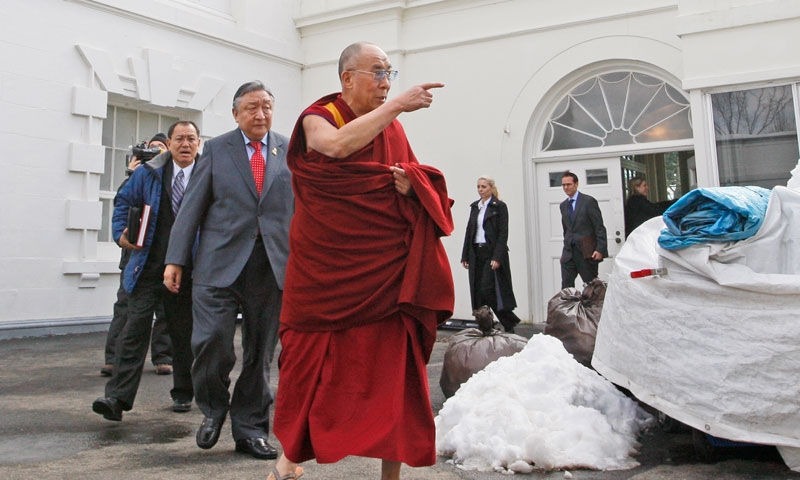
Near Eastern Promises: Why Washington Should Focus on the Middle East
By Kenneth M. Pollack and Ray Takeyh
Contrary to popular myths and conspiracy theories about Washington’s desire to control the Middle East, for the past six decades, U.S. policymakers have usually sought to minimize the United States’ involvement there. But the high-stakes nature of American interests in the region — particularly oil — and the complexity of the Middle East’s problems always seem to draw the United States back in. In spite of himself, U.S. President Dwight Eisenhower was sucked into the Suez crisis in 1956 and the pan-Arabist revolts of the late 1950s. Lyndon Johnson barely lifted a finger to prevent the Six-Day War in 1967. Richard Nixon found himself grudgingly drawn into the region by the 1973 Arab-Israeli war and the superpower nuclear crisis it caused. Despite his aggressive image, Ronald Reagan did little in response to repeated attacks in Lebanon and the Persian Gulf by Iran and its proxies. George H. W. Bush came to office hoping to ignore Saddam Hussein, not to go to war with him. And although it is rarely remembered today, George W. Bush was not particularly interested in the Middle East and paid little attention to the region prior to the 9/11 attacks.
President Barack Obama arrived in office determined to succeed where his predecessors had failed. After a decade of war in Afghanistan and Iraq, he planned to remove the Middle Eastern albatross from around Washington’s neck. In public statements, Obama administration officials have been careful to avoid any suggestion that Washington wants to “disengage” from the Middle East. But some senior officials have been known to make the case in private for why the U.S. approach to the region needs to change substantially. They have argued that the United States has consistently overinvested in the region, especially during the prior administration. They planned to correct that imbalance with a “pivot” of U.S. diplomatic and military resources away from the Middle East and toward Asia, the region where Obama believes the risk-reward ratio is more favorable to the United States.
These officials have made three interlocking arguments to support this approach. First, they have insisted that the Middle East’s problems have been exaggerated; in their view, most of those problems are small squabbles that could be easily resolved. Second, these officials contend that many of the region’s worst problems are in fact the product of the United States’ overinvolvement. In part, this claim is based on a “moral hazard” argument: Washington’s devotion to the region allows Middle Eastern leaders to indulge in bad behavior, and if the Americans would just pull back, the region’s governments would change their ways. Finally, they have claimed that U.S. interests in the Middle East are both more modest and less vulnerable than commonly believed.
As these members of Obama’s team see things, these factors justify a major downgrading of U.S. involvement in the region. This line of thinking underpinned the administration’s lack of interest in extending the deployment of U.S. forces in Iraq, its halfhearted efforts at peacemaking between the Israelis and the Palestinians (at least until last year, when John Kerry became secretary of state), the limited U.S. support for opposition movements in Libya and Syria, and the administration’s confused and ambivalent response to the revolts of the Arab Spring. Under Obama, the United States has not quite disengaged from the region; there is still considerable contact between Washington and regional capitals. But the administration has shown almost no willingness to invest more resources or pursue constructive agendas there.
U.S. disengagement has not produced a more stable or secure Middle East.
Five years into the Obama presidency, this approach has yielded mixed results. Administration officials were wrong to believe that the region’s problems have been exaggerated or are mostly the result of American blunders. U.S. disengagement has not produced a more stable or secure Middle East. In fact, the region has gotten much worse. Left to their own devices, the region’s leaders have hardly governed more effectively; partly as a result, civil wars are burning in Libya, Syria, and Yemen. Bahrain, Egypt, Iraq, and Lebanon are teetering on the edge. Meanwhile, instability in those places has spilled across borders into Algeria, Jordan, Kuwait, and Turkey, straining those countries’ already fragile social fabrics. Moreover, these stresses have collectively provoked a vicious proxy war between Iran and a group of Sunni Arab states, led by Saudi Arabia, that many fear will snowball into a regionwide Shiite-Sunni conflict.
Ironically, however, these conditions have validated one of the claims made by administration officials. The growing chaos in the Middle East has not yet affected core U.S. interests, which suggests that those officials were correct when they claimed that U.S. interests in the region were less vulnerable than often assumed. Throughout Obama’s time in office, the price of oil — the ultimate barometer of Middle Eastern stability and the most important U.S. interest in the region — has stayed largely stable, and most projections suggest that it will remain so for the foreseeable future. So far, there have been no major terrorist attacks against Americans, either in the region or at home. And so far, most of Washington’s key Middle Eastern allies, including Israel, have suffered only modestly from the regional mayhem.
That is a noteworthy and somewhat surprising outcome. In 2009, it would have been hard to put much stock in a prediction that the United States could shirk its regional leadership role for five years, sit back and watch as the Middle East came unglued, and not suffer painful blows to vital U.S. interests. And yet, although American interests have not suffered thus far, Washington’s good fortune seems unlikely to last. The relative stability of oil prices has been driven by expanding oil exports from places that are increasingly beset by violence, particularly Iraq. Syria has become a breeding ground for international terrorists, some of whom aspire to attack targets in the United States. The power vacuum in Yemen continues to provide a safe haven for al Qaeda in the Arabian Peninsula. And as Libya slides into a civil war of its own, other Salafi groups are finding sanctuary and recruits there.
Although Washington’s closest allies in the region have so far stood up well to a multitude of threats, they have not been immune to them. In the past three years, Israel has used force multiple times against the Syrian regime, as well as against extremists in Gaza and the Sinai, to try to tamp down the dangers growing along its borders. Unprecedented internal unrest has buffeted the monarchy in Jordan, which is also struggling to withstand a flood of refugees from Iraq and Syria. And Saudi Arabia faces the prospect of an unnerving royal succession in the not-too-distant future.
Nevertheless, the fact that these problems have not already affected American interests suggests that, in confronting the region’s instability, a modestly increased effort might be all that is required to safeguard U.S. interests against the Middle East’s myriad threats. Obama might have pushed the pendulum of U.S. involvement in the Middle East too far toward disengagement, but there is no need to swing it back to the militarized overinvolvement that characterized the administration of George W. Bush.
SALVAGING SYRIA
The instability that currently plagues the Middle East is best understood as a combination of clashes arising from the particular political, economic, and security dysfunctions of each country coupled with a set of overarching conflicts that span the region’s borders. One of those transnational sources of entropy is spillover from the Middle East’s many civil wars, some of which have gone viral, as the problems of one society spread to its neighbors and spark new conflicts.
The current epicenter of this outbreak is the conflict in Syria, which has strewn the region with refugees and terrorists, radicalized neighboring populations, and inflamed secessionist ambitions in several countries. The war has undermined many of the region’s economies and threatens to drag in and drag down all of Syria’s neighbors. Jordan and Turkey have struggled to deal with the burden of some two million Syrian refugees. Sunni extremists from Syria have taken refuge in Iraq and are threatening to rekindle the Iraqi civil war. And the conflict in Syria has become the most deadly battleground in the proxy war between Iran, which backs the regime of Bashar al-Assad, and the Sunni states of the Arab Middle East, which are frantically trying to limit Shiite Iran’s influence without also empowering the Sunni Islamist Muslim Brotherhood.
The nature of the conflict in Syria makes it difficult for any outside power to address it quickly or easily, which is one reason why the war-weary United States has refrained from getting too deeply involved. The limited efforts of the Obama administration have had little impact, except to befuddle U.S. allies. And the options proposed by many of the administration’s critics, such as providing more advanced weapons to the opposition, are less than appealing, because they are likely only to make the fighting more lethal without bringing it any closer to a resolution.
Yet doing next to nothing seems more and more dangerous. Without a force that can tip the balance, peace is unlikely to come to Syria for a long time. The conflict will keep tearing at the rest of the region and may pull down other states, too — countries that affect vital U.S. interests in ways that Syria does not. As long as the Assad regime can rely on a steady influx of Russian arms, Iranian funds, and Hezbollah troops, there is no reason to believe that it is set to crumble. For now, the morale of Assad’s forces is high, whereas the fragmented opposition is suffering from internecine conflict and inadequate external patronage. The image of the Syrian tyrant earning international acclaim for dismantling chemical weapons he was not supposed to have, much less use, has not helped, either.
The region’s civil wars have gone viral, as the problems of one society spread to its neighbors.
So far, external support for the regime and for the opposition has produced a bloody stalemate. The only outside actor that could break the deadlock is the United States. Although the Obama administration has been understandably wary of any action that could lead to the commitment of U.S. ground forces, there are options that would offer a reasonable expectation of ending the Syrian conflict on terms acceptable to the United States. In particular, the United States could follow the approach it employed during the Bosnian civil war in the 1990s. Beginning in 1994, the United States helped Croatia and the Bosnian Croats — covertly at first, but overtly later on — build a conventional military trained in tactics and operations, led by a unified command structure, and staffed by a competent officer corps. That Croatian force, assisted by NATO airpower, then defeated the Bosnian Serb army in a series of battles that convinced the Serbian leadership that military victory was impossible and so made the 1995 Dayton accords possible.
At present, the Syrian opposition is a mess, paralyzed by corruption and incompetence and dominated by Salafi extremists. But that situation need not be permanent. In 2005–6, when the United States finally got serious about building a large, capable Iraqi army, Iraq’s armed forces were also in disarray. Yet by 2008, the U.S. military had helped create a reasonably competent Iraqi force that was able to aid the American effort to end the Iraqi civil war and forge a new power-sharing arrangement to keep the peace.
Helping the Syrian opposition build a large, professional military able to hold territory and defeat both the regime’s forces and the Islamist extremists involved in the conflict would certainly reduce the opposition’s fragmentation. It would also furnish a powerful, secular institution around which a new Syrian government could be built. Creating such a force would be a long and arduous task: after all, U.S. efforts to train a capable Iraqi army benefited from the fact that around 150,000 American troops occupied Iraq, whereas in Syria, the United States has no boots on the ground at all. But it is the only option that offers hope for an acceptable end state in Syria at a reasonable cost.
IRAQ ON THE BRINK
Americans might feel a humanitarian desire to end the slaughter in Syria, but the conflict there does not directly affect U.S. strategic interests. That is not true in the case of Iraq, where the spillover from Syria is threatening to rekindle the civil war that began in the wake of the U.S. invasion in 2003. Iraq has become OPEC’s second-largest oil exporter, and optimistic projections about the future stability of oil prices rest far less on the tapping of North American shale resources and far more on the expectation that Iraq will continue to boost production for years to come — a dubious assumption if the country slides back into sectarian conflict.
There is no question that Iraq is suffering from the Syrian inferno next door. Weapons, funds, and Sunni militants flow back and forth across the border. But Iraq’s problems spring principally from the country’s own messy postwar politics and security situation. The fear and the desire for retribution that reemerged the instant that U.S. troops left Iraq have overwhelmed the Iraqi state, which still lacks strong, independent institutions. For the United States to help quell the spreading violence, it will have to pressure the Iraqis to restore the cross-sectarian power-sharing arrangements that Washington helped forge in 2008.
But the United States had much more leverage then than it does today, and so it will have to acquire some new political capital. The administration’s recent decision to sell 24 Apache attack helicopters to Baghdad is a good start. Washington should consider bolstering more broadly its counterterrorism and military assistance to Baghdad, along with helping address Iraq’s myriad shortcomings in agriculture, education, health care, and dozens of other areas — as long as Baghdad demonstrates a willingness to rebuild a functional power-sharing arrangement.
The United States also needs to find its voice on Iraq. The Obama administration has consistently preferred quiet diplomacy to public statements. But Washington should speak out when Iraqi leaders, including (but not limited to) Prime Minister Nouri al-Maliki, act in ways that subvert Iraq’s stability. The administration’s word still holds weight in Baghdad, not least because Iraqi elites still attribute great, if unseen, power to Washington.
ADRIFT ON THE NILE
Until the Arab Spring, Egypt had long been among the United States’ most reliable allies in the region. When President Hosni Mubarak fell from power following the mass protests of 2011, the United States had the chance to play Virgil to a new, democratic Egypt. Although it is impossible to prove a hypothetical, had the United States been willing to come forth quickly with $5–$10 billion in additional aid for Egypt (on top of the roughly $1.5 billion that Egypt already receives annually), it probably would have bought Washington enormous leverage — perhaps enough to prevent the worst excesses of Mohamed Morsi, the Islamist president who came to power after the revolution, and thus forestall Morsi’s overthrow by generals who seem determined to return Egypt to its prerevolutionary torpor.
But the Obama administration did almost nothing for Egypt, offering up only a paltry $150 million in additional aid. As a result, Washington has lost most of its influence in Cairo, and the cause of democracy in Egypt has been set back. Today, it might be the case that the best the United States can do is focus on the long term: wait for the kind of political repression and economic mismanagement that triggered the 2011 revolution to reemerge (which they inevitably will), and hope that in the face of intense popular unrest, U.S. officials will be able convince the Egyptian regime to reform.
Egypt was once the great prize of the Arab Spring, and it may be lost for now. But in other places, the hope inspired in 2011 lives on and should be nourished. Tunisia has succeeded where Egypt failed, and the kings of Jordan and Morocco have at least paid lip service to the need for far-reaching changes to placate their unhappy populations. Greater generosity on Washington’s part could help secure the democratic transition in Tunisia and perhaps help nudge the Jordanian and Moroccan monarchies to live up to their promises, all at a much lower financial cost than what would have been necessary for Egypt — hundreds of millions of dollars, rather than billions. If the United States can help promote democracy, or at least democratic reforms, in those countries, then the Arab Spring will have had some lasting, positive impact.
ARABIAN PLIGHTS
The situation in Saudi Arabia might seem less dramatic than those elsewhere in the region, but it is hardly less consequential. The ruling Saud family has maintained its grip on power for eight decades despite internal rebellions, wars on the country’s periphery, and several succession crises. True to form, the Saudi monarchy weathered the Arab Spring with relatively little damage, thanks to two factors: rewards and reforms. But the rewards are likely to yield only temporary benefits, having taken the form of generous social welfare spending intended to mollify a restive population. And the sustainability of the reforms is uncertain, because it is tied up with the ruling family’s looming and risky succession. Thus, the House of Saud might not be on the verge of collapse, but it needs to shore up its foundations.
Despite its oil wealth, the kingdom suffers from the same economic weaknesses that created the conditions for revolts elsewhere in 2010–11. Like most Arab countries, Saudi Arabia is a young nation; around two-thirds of its population of some 27 million is under 30 years old. Today, the youth unemployment rate hovers at around 30 percent, and 100,000 young Saudis enter the job market every year. Foreign labor continues to dominate the private sector, since Saudis prefer less demanding but more lucrative public-sector jobs. These economic flaws are compounded by an underperforming educational system and a reluctance to integrate women into the work force.
Part of Riyadh’s response to the Arab Spring only made these flaws more glaring. The Saudi government chose to douse any embers of internal unrest with cash while trying to stem the tide of change elsewhere in the region. In 2011, Riyadh committed over $130 billion to housing and “financial allowances” for Saudi citizens — payoffs, in essence — and it has since pledged almost $30 billion in foreign aid to the governments struggling with unrest in Bahrain, Egypt, and Morocco. Although the gambit seems to have paid off in the short term, the Saudis will not be able to keep buying their way out of their problems. As rich as they are, they cannot afford such outlays forever, especially if the price of oil falls. Paradoxically, the decrease in oil prices that many experts expect to result from the growth of U.S. shale oil production and from the ramping up of Iraqi production — which together seem like an obvious boon to Washington — could in fact pose a danger to the stability of Saudi Arabia and thus to the United States.
According to many Saudis, however, the key to understanding their reaction to the Arab Spring lies not in such bribes but in their feelings toward King Abdullah. For close to two decades, Abdullah has ably guided the kingdom and diligently put in place gradual reforms, striking a delicate balance between the kingdom’s conservative culture and its pressing need for economic and political change. In 2011–12, many Saudis insisted that the Arab Spring would not come to the kingdom because it was not needed there: Abdullah recognized the country’s plight and had already begun to address its needs — unlike, say, Mubarak in Egypt.
But Abdullah is now 89 years old and in poor health, and his two most likely successors, Crown Prince Salman and Prince Muqrin, do no inspire great confidence. This is worrisome, because the economic and political challenges facing the kingdom call for steady leadership and more reforms to avert more radical and unpredictable change. The Saudi state needs to further reduce gender discrimination, relax government controls in the private sector, and enhance vocational training. The welfare state has to shrink, and the promise of lifelong government subsidies for all citizens should be reconsidered. For much of its existence, Saudi Arabia has drawn legitimacy from its official support for orthodox clerics. But the state’s role in religious affairs has led to unsavory bargains with extremists who have sometimes turned against the monarchy and who represent a constant, lurking threat to the kingdom’s national security. The Saudis thus need to find a way out of their sometimes deadly embrace of religious hard-liners.
But the ruling family will remain unwilling to make any substantive concessions at home as long as it feels threatened by external forces. The Saudis tend to blame their problems on the rest of the Arab world and on their main regional rival, Iran. And as long as the kingdom sees itself as beleaguered by external threats, whoever follows Abdullah will probably not embrace further reforms and might even opt for greater autocracy.
The United States can help prevent that outcome. As always, Washington’s level of influence with the Saudis is limited, especially when it comes to Saudi domestic policy, but it is not zero. Washington will have to exploit whatever leverage it has, because the Saudis are furious at the Obama administration for its handling of the Arab Spring, the Syrian crisis, and the Iranian nuclear program. The Saudis will push forward with domestic reforms only if the United States does everything it can to quell the turmoil in the region — and, crucially, to hold Iran in check.
DEAL OR NO DEAL
Of course, for Washington, Iran already presents quite a challenge, even without having to satisfy Saudi demands for American toughness. Iran has bedeviled American policymakers for decades, but U.S.-Iranian relations today are especially complicated because Tehran seems wracked, once again, by the perennial battle between hard-liners and pragmatists for the soul of the Islamic Republic. Both camps seek regional hegemony for Iran. The hard-liners think the best way to get it is to drive the United States from the region and replace the anti-Iranian and pro-American governments of the Middle East with ones more sympathetic to Tehran. Iran’s quest for a nuclear weapons capability has been only one part of that strategy. Iran has also employed a wide range of other instruments to advance the hard-liners’ agenda, including terrorism and support for revolutionaries and insurgents who threaten U.S. interests in the Middle East.
Iranian pragmatists, on the other hand, argue that Iran can achieve regional hegemony by developing its economy and human capital and by embracing the modern, globalized world. From their perspective, endlessly fighting the United States only weakens Iran; it would be better for Iran to grow into a dominant power peacefully, as Germany did after World War II.
A deal between Iran and the West that prevents the Islamic Republic from developing nuclear weapons might encourage Tehran to focus on its own economic growth and convince it to rein in its efforts to destabilize the region. But it is at least as likely that Iran would see a nuclear deal as relieving the pressure on its economy — the regime’s Achilles’ heel — and thus enabling it to redouble its aggressive foreign designs. The latter scenario is certainly what the Israelis, the Saudis, and many of Washington’s other Middle Eastern allies dread. They fear that an arms control agreement will lead to a U.S.-Iranian détente that will leave them to face Iran’s aggression on their own.
Iran’s supreme leader, Ayatollah Ali Khamenei, also worries about the potential effects of a nuclear deal, although for different reasons. He has long agonized over the seductive influence of American culture and fears that a constructive relationship between the United States and Iran would subvert the theocratic state and taint Iran’s revolutionary image in the Muslim world. He has found more value in leading the rejectionist pack than in joining the global order. Even if a nuclear deal emerged that interested him, he might feel that the only way to placate the hard-liners he relies on would be to assure them that the agreement would not otherwise moderate Iranian foreign policy. He might even try to secure their grudging acceptance of such a deal by promising them a freer hand to make mischief abroad.
Consequently, it seems premature to assume that a nuclear accord with Iran will mean the end of Iranian regional aggression. But the history of the region strongly suggests that the United States is the state best able to limit Iran’s aggressive efforts to overturn the regional status quo. Claims of Iranian irrationality notwithstanding, the Islamic Republic has always demonstrated an unmistakable respect for American power. The Iranians are generally careful not to cross explicit American redlines. They sometimes challenge and probe U.S. prohibitions, but when they meet resistance, they usually step back, fearful of how Washington might react. Iran, for example, has never kicked out the UN inspectors who monitor its nuclear program, and it has never shipped its most lethal weapons to Iraqi Shiite militias or Hezbollah. There are a small number of exceptions to this pattern, but they have typically proved the rule: the Iranians have crossed American redlines only when they have misjudged their exact position or perceived correctly that they were not truly red.
Tehran has no such respect for its regional adversaries, whom the Iranians regard with contempt. The feelings are mutual, and thus without the United States there to deter Iran and intercede on behalf of U.S. allies, there is a high probability of regional crises that could escalate in unpredictable ways and threaten American interests, especially the price of oil.
The challenge for the United States, then, is to find a way to negotiate an end to Iran’s nuclear ambitions while restraining Tehran’s regional ambitions. To find the right mix of détente and containment, Washington must restore its allies’ confidence in its willingness and ability to protect their security. The interim nuclear agreement with Iran has fueled concerns in Arab capitals and Israel that arms control diplomacy might bring Iran and the United States into a regional embrace. That prospect might seem comical given the legacy of mistrust between Washington and Tehran, but it is taken all too seriously in Arab royal palaces and chancelleries, and in Tel Aviv. Perhaps the best way to shore up U.S. allies’ faith in Washington would be to act more decisively in Syria, because as long as the United States exempts itself from that conflict, its other pledges will ring hollow to a skeptical Arab audience.
DON’T GO AWAY — WE’LL BE RIGHT BACK
After more than a decade of costly and unsatisfying wars, Americans are tired of foreign entanglements, and the endless fractiousness of the Middle East makes it the last place where Americans want to invest their country’s resources. But the problems of the Middle East remain too deeply intertwined with U.S. national security and the American economy to ignore. Those problems are forcing the Obama administration to take a greater interest in the Middle East than it would prefer; just as previous administrations have learned, the region has a tendency to pull the United States back in, even when it wants out.
Fortunately, the region’s current problems do not yet seem quite so threatening that they require a massive commitment of U.S. power; all that is necessary is a bit more than what the Obama administration has been willing to do so far. But Washington ought to have learned from its long and painful history with the Middle East that ignoring the region’s problems will not make them go away. Inevitably, they return, worse than before. And just as inevitably, handling those problems later requires far more time and energy — and blood and treasure — than solving them sooner does.
Even in an age of retrenchment, the United States remains a nation with competing global interests, and there is no reason to believe that Washington lacks the resources it needs to do what’s necessary in the Middle East and still tend to its interests elsewhere. The Obama administration’s so-called pivot to Asia has not required a single shift of assets away from the Middle East: not one aircraft carrier, not one diplomat, not one aid program has been moved. And nor should it. The United States should fight fewer wars with its own forces in the Middle East, but not because it needs to fight more of them in Asia. There should be no doubt that Asia is central to U.S. foreign policy. But that does not reduce the importance of the Middle East: U.S. vital interests encompass both regions. Washington should be doing more in Asia, but it must not — and need not — do so at the expense of the Middle East
This essay was orginally posted on : The Foregin Affairs












